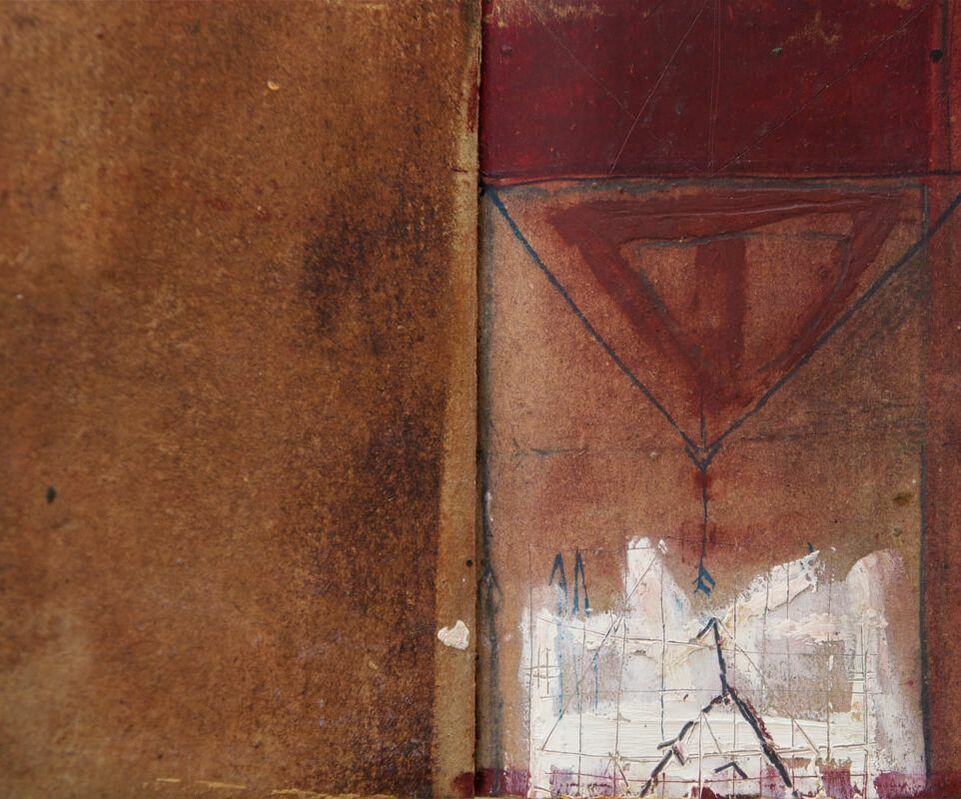Rarely an exhibition comes by that instigates curiosity and quite simply, have you leave the gallery with feeling quite right. Ayessha Qurai
Rarely an exhibition comes by that instigates curiosity and quite simply, have you leave the gallery with feeling quite right. Ayessha Quraishi’s mid-career retrospective featuring works from 1985 till 2020 at Koel Gallery in Karachi brings us very close to the artist’s oeuvre, that has progressed from doodles and drawings to fully blown abstract paintings in three decades. I may perhaps best define Quraishi’s work as oxymoronic abstraction. For the work seems quite serene, well, “abstract” at first glance however, a second look will urge you to inspect how it announces itself with immediacy, vigor and poise.
Koel feels jam packed as you enter: frames adorn every bit of every wall. Incredibly though, it is not suffocating. Curator Zarmeene Shah’s familiarity with Quraishi’s work has perhaps proven to be the strongest point in the artworks ‘placement; the show contains sixty-eight works (counting Quraishi’s journals as one). On the right, we see Quraishi’s earliest works beginning in the 80s. Anyone familiar with American painter Cy Twombly (b.1928-2011) can instantly make a connection. As Twombly and his North American contemporaries stepped away from formal abstract expressionism while creating art in league with their own, Quraishi’s drawings are reminiscent of the same: they move away from abstract expressionism, yet seem to channel the style’s spirit while simultaneously crafting a vocabulary of their own.
Salt and Pepper (1985) and Untitled (1985) are drawings made with charcoal and oil on paper. Almost like a Cezanne that has just begun but misses any “painterly” brushwork, the works are uncomplicatedly whole. Within the same year, you find Untitled 11 and Untitled 13 that bring more paint and color on the canvas. Reminiscent of American Abstract Expressionist Mark Rothko, who painted with a carefully controlled liberty, Quraishi’s works silently seem to vibrate with poised energy. Child with Ant (1989) shows a paper divided roughly in parts that has organic doodles resembling geometric shapes that of a child and an ant. Another western painter comes to mind, Wassily Kandinsky’s organically composed and vibrant paintings that learnt from abstracting and stylizing micro-organisms onto canvas.
It is strange how I seem to be ruminating over Western art while in dialogue with Quraishi’s work. Pakistan has a rich legacy of its own modern and abstract artists however their work learns greatly from native subjects and settings. Zubeida Agha painted abstract and representational forms in the 50s, well continuing till the 80s. Agha’s abstraction brought the city as well as still life back on the canvas. Her Blue Vase (1982) sees a canvas completely covered in azure blue with silhouette of a vase in the bottom center. Contribution of Quraishi’s oeuvre is meritorious within the art history of the country; the works are organic yet geometrical, contained within their physical borders and conceptually diverse to individualistic interpretation.
Then come the 90s, and suddenly the artist thunderously prevails. Untitled from 1990 sees red paint all over an 11 x 11-inch paper with horizontal scratches and marks at the top right. The decade sees a radical turn in her work, dynamic canvases with bold hues in black, gray and earthly tones announce their ominous presence. More untitled works and we see sharper scratches as if these are thorns reflecting some inner pain or rage, while still prudently adjusted within the painting’s physical parameters, aware and sentient.
Shah includes the artist’s journals in the show. These journals from the decade of 2000 observe an uprising of color in the artist’s work. Painting is thoroughly enjoyable as a pleasurable process. Journal 4, page 10 and 11 are reminiscent of Pakistani veteran artist Meher Afroze’s earthly toned paintings. For Meher, painting is reflective, a return to humane spirituality, ethics, and perhaps a hint of morality. In the hands of Quraishi, similar tones become a process that is to be achieved and enjoyed with direct application of paint into paper, representing seemingly little while hiding an entire cosmos of energy, sentiment, and inspiration within.
Works from the freshly passed, last decade, where the artist evolved further by experimenting with wood sculpture and photographic panels are also displayed. Quraishi’s trajectory as an artist is not to be missed in a precocious show like this one.
Think of the retrospective as an archive on display, for a limited time.

COMMENTS